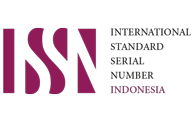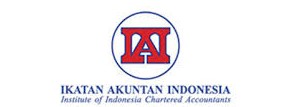Pengaruh Overlapped Audit Committee terhadap Pengungkapan Key Audit Matters di Indonesia
Abstract
This study aims to determine the overlapping relationship between the Audit Committees influencing the disclosure of Key Audit Matters (KAMs) in Indonesia. This study uses quantitative research methods with hypotheses. Data collection techniques using non-participant observation. Research on KAMs is very interesting to do because there have been several studies that have investigated the factors that influence KAMs for developed countries, but there has been no research that has tried to analyze this in Indonesia. Based on the results of the study, it was found that the hypothesis (H1) is appropriate and it can be concluded that the level of overlap between members of the Audit Committee has a positive relationship with the level of disclosure of KAMs in the company's financial statements. This can be seen from the partial test results with a significance value of 0.0290 (0.290 <0.05) and a positive β coefficient of 0.231. This shows that the greater the level of concurrent positions in the Audit Committee owned by the company, the higher the number of KAMs disclosed by the company. For further researchers, they can expand the population and sample, not only limited to financial sector companies on the IDX in 2022, then compare how the company characteristics influence before the implementation of the ISA 701 Key Audit Matters regulations and after the implementation of ISA 701 Key Audit Matters in Indonesia, and can add the use of other variables that can affect the disclosure of KAMs.
References
Abu, A., & Jaffar, R. (2020). Audit Committee Effectiveness and Key Audit Matters. Asian Journal of Accounting and Governance, 14(December), 1–12. https://doi.org/10.17576/ajag-2020-14-06
Al-Dhamari, R., Alquhaif, A. S., & Al-Gamrh, B. A. (2022). Modelling the impact of audit/remuneration committee overlap on debtholders’ perceptions of accounting information quality: The role of CEO power. International Journal of Finance and Economics, 27(3), 2898–2920. https://doi.org/10.1002/ijfe.2304
Al Lawati, H., & Hussainey, K. (2022a). The Determinants and Impact of Key Audit Matters Disclosure in the Auditor’s Report. International Journal of Financial Studies, 10(4), 1–18. https://doi.org/10.3390/ijfs10040107
Al Lawati, H., & Hussainey, K. (2022b). The Determinants and Impact of Key Audit Matters Disclosure in the Auditor’s Report. International Journal of Financial Studies, 10(4), 107. https://doi.org/10.3390/ijfs10040107
Badawy, H. (2021). The Effect of Quality and Timeliness of Limited Review Report on Perceived Interim Financial Reporting Quality during COVID-19 Pandemic Crisis: Evidence from Egypt. , 2(1), 25–74. https://doi.org/10.21608/cfdj.2021.146711
Bédard, J., Gonthier-besacier, N., & Schatt, A. (2018). Consequences of Expanded Audit Reports : Evidence from the Justifications of Assessments in France Consequences of Expanded Audit Reports : Evidence from the Justifications of Assessments in France.
Chandar, N., Chang, H., & Zheng, X. (2012). Does overlapping membership on audit and compensation committees improve a firm’s financial reporting quality? Review of Accounting and Finance, 11(2), 141–165. https://doi.org/10.1108/14757701211228192
Chen, S.-S., Huang, C.-W., Hwang, C.-Y., & Wang, Y. (2022). Voluntary disclosure and corporate innovation. Review of Quantitative Finance and Accounting, 58(3), 1081–1115. https://doi.org/10.1007/s11156-021-01019-7
Core, J. E., Holthausen, R. W., & Larcker, D. F. (1999). Corporate governance, chief executive officer compensation, and firm performance. Journal of Financial Economics, 51(3), 371–406. https://doi.org/10.1016/S0304-405X(98)00058-0
Discussion, C. A. G. (2011). Auditor Reporting — Report Back. September, 1–16.
Elnahass, M., Omoteso, K., Salama, A., & Quang, V. (2020). Differential market valuations of board busyness across alternative banking models. In Review of Quantitative Finance and Accounting (Vol. 55, Issue 1). Springer US. https://doi.org/10.1007/s11156-019-00841-4
Elyasiani, E., & Zhang, L. (2015). Bank holding company performance, risk, and “busy” board of directors. Journal of Banking & Finance, 60, 239–251. https://doi.org/10.1016/j.jbankfin.2015.08.022
Ferreira, C., & Morais, A. I. (2020). Analysis of the relationship between company characteristics and key audit matters disclosed. Revista Contabilidade e Financas, 31(83), 262–274. https://doi.org/10.1590/1808-057x201909040
Ferris, S. P., Jagannathan, M., & Pritchard, A. C. (2003). Too Busy to Mind the Business? Monitoring by Directors with Multiple Board Appointments. The Journal of Finance, 58(3), 1087–1111. https://doi.org/10.1111/1540-6261.00559
Ghozali, I. (2011). Aplikasi Analisis Mulrivariate Dengan Program Spss. Universitas Diponegoro.
Hairul Azlan Annuar & Hafiz Majdi Abdul rashid. (2015). An investigation of the control role and effectiveness of independent non-executive directors in Malaysian public listed companies. Emerald Insight, Vol. 30 Is. https://doi.org/10.1108/MAJ-09-2013-0936
Imam Ghozali. 2018. Aplikasi Analisis Multivariate Dengan Program IBM SPSS 25. Edisi 9. Semarang: Badan Penerbit Universitas Diponegoro.
Jiang, L. (2020). Risk Management Committee and Bank Performance: Evidence from the Adoption of Dodd-Frank Act. SSRN Electronic Journal. https://doi.org/10.2139/ssrn.3699957
Jiraporn, P., Kim, Y. S., & Davidson, W. N. (2008). Multiple directorships and corporate diversification. Journal of Empirical Finance, 15(3), 418–435. https://doi.org/10.1016/j.jempfin.2007.07.002
Joben Emilio, Melisa Kurniani, W. Y. (2022). Analisis Persiapan Indonesia dalam Menerapkan Key Audit Matters. Jurnal Mirai Management, 7(3), 383–391. https://doi.org/https://doi.org/10.37531/mirai.v7i3.3205
Laux, C., & Laux, V. (2009). Board Committees, CEO Compensation, and Earnings Management. The Accounting Review, 84(3), 869–891. https://doi.org/10.2308/accr.2009.84.3.869
Lennox, C. S. (2019). Are expanded audit reports informative to investors? Evidence from the UK. SSRN Electronic Journal.
Li, H., Hay, D., & Lau, D. (2019). Assessing the impact of the new auditor’s report. Pacific Accounting Review, 31(1), 110–132. https://doi.org/10.1108/PAR-02-2018-0011
Liao, C.-H., & Hsu, A. W.-H. (2013). Common Membership and Effective Corporate Governance: Evidence from Audit and Compensation Committees. Corporate Governance: An International Review, 21(1), 79–92. https://doi.org/10.1111/corg.12000
Pengumuman Nomor 04/PM.11/2018, (2018). https://www.ojk.go.id/id/berita-dan-kegiatan/pengumuman/Pages/OJK-Tetapkan-Sanksi--Administratif-terhadap-Sdr.-Hendry-Leo-karena-Langgar-Aturan-Bidang-Pasar-Modal.aspx
POJK No 55. (2015). POJK No 55 /POJK.04/2015 Tentang Pembentukan Dan Pedoman Pelaksanaan Kerja Komite Audit. Ojk.Go.Id, 1–29. http://www.ojk.go.id/id/kanal/iknb/regulasi/lembaga-keuangan-mikro/peraturan-ojk/Documents/SAL-POJK PERIZINAN FINAL F.pdf
Prof, A., & Pratoomsuwan, T. (2018). The Key Audit Matter ( Kam ) Practices : The Review of First Year Experience in Thailand. 23(November), 63–91.
Profesi, K., & Publik, A. (2022). Laporan kegiatan.
PUGKI. (2021). Pedoman Umum Governansi Korporat Indonesia (PUGKI) 2021. Komite Nasional Kebijakan Governansi.
Reid, L. C., Carcello, J. V., Li, C., Neal, T. L., & Francis, J. R. (2019). Impact of Auditor Report Changes on Financial Reporting Quality and Audit Costs: Evidence from the United Kingdom. Contemporary Accounting Research, 36(3), 1501–1539. https://doi.org/10.1111/1911-3846.12486
Sekaran, U. (2013). Metodologi Penelitian Untuk Bisnis (4th Ed.). Salemba Empat.
Sierra-García, L., Gambetta, N., García-Benau, M. A., & Orta-Pérez, M. (2019). Understanding the determinants of the magnitude of entity-level risk and account-level risk key audit matters: The case of the United Kingdom. The British Accounting Review, 51(3), 227–240. https://doi.org/10.1016/j.bar.2019.02.004
Silalahi, U.(2012). Metode Penelitian Sosial. PT Rafika Aditama.
Sugiyono.(2013). Metode Penelitian Bisnis. Alfabeta.
Sukrisno Agoes, I. C. A. (2014). Etika Bisnis & Profesi. Salemba Empat.
Tanyi, P. N., & Smith, D. B. (2015). Busyness, Expertise, and Financial Reporting Quality of Audit Committee Chairs and Financial Experts. AUDITING: A Journal of Practice & Theory, 34(2), 59–89. https://doi.org/10.2308/ajpt-50929
Vanstraelen, A., Schelleman, C., Meuwissen, R., & Hofmann, I. (2012). The Audit Reporting Debate: Seemingly Intractable Problems and Feasible Solutions. European Accounting Review, 21(2), 193–215. https://doi.org/10.1080/09638180.2012.687506
Velte, P. (2018). Does gender diversity in the audit committee influence key audit matters’ readability in the audit report? UK evidence. Corporate Social Responsibility and Environmental Management, 25(5), 748–755. https://doi.org/10.1002/csr.1491
Xu, X., Wang, Z., Zhou, B., & Zhang, Z. (2019). The empirical analysis of knowledge spillover effect measurement. Knowledge Management Research & Practice, 17(1), 83–95. https://doi.org/10.1080/14778238.2018.1557998.







.png)
.png)
